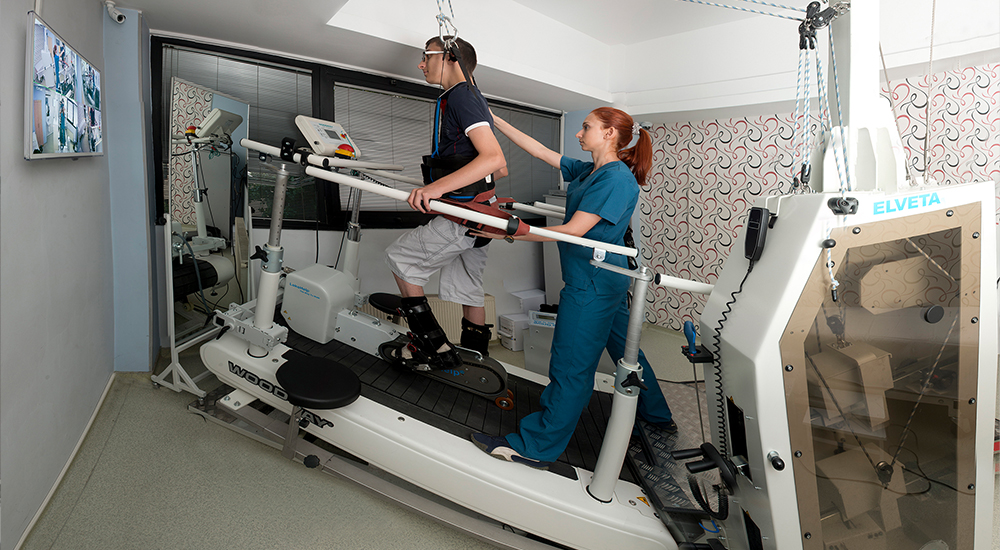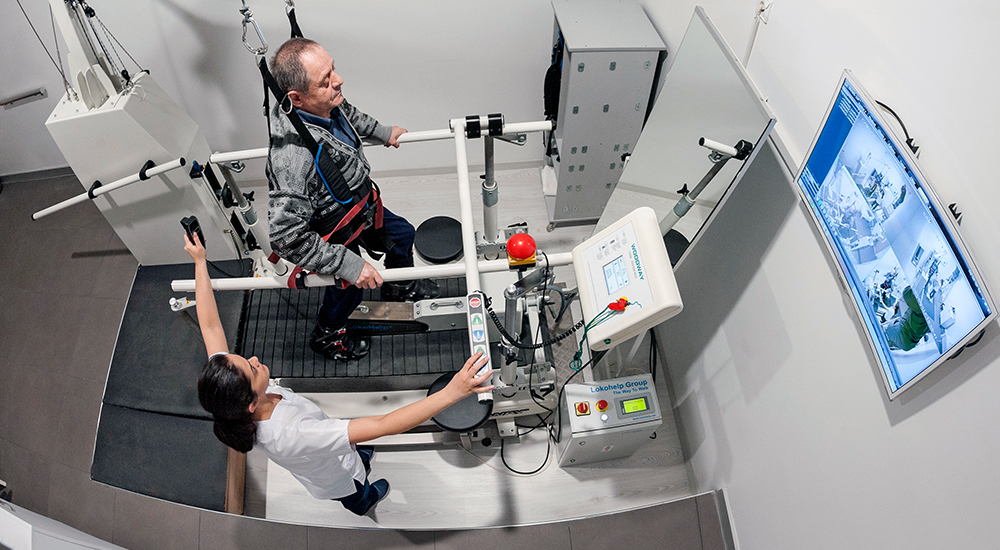Robotic rehabilitation systems can be used in neurological diseases with walking impairments, in patients experiencing balance loss, and in any disease causing loss of walking function.

What is Robotic Rehabilitation?
With advances in technology, robotic rehabilitation systems have started to be used in the field of rehabilitation. Robotic Rehabilitation Systems can be applied in any disease involving walking difficulties. Especially in the rehabilitation of neurological diseases, combining traditional rehabilitation methods with new technological approaches such as robotic rehabilitation provides the highest level of treatment opportunity. Robotic rehabilitation benefits not only patients who cannot walk but also those with walking impairments.
In Which Diseases Can the Robotic Rehabilitation System Be Used?
Primarily, robotic rehabilitation systems are used in neurological diseases with walking impairments, but they can also be used in patients experiencing balance loss and after orthopedic surgical operations that cause loss of walking function.
Patients who frequently require robotic treatment include:
- Hemiplegic patients: Stroke (cerebrovascular accident) patients often experience loss of walking function. During rehabilitation, it is important for the patient to acquire the correct walking pattern. Incorrectly developed walking patterns often become permanent. Therefore, in the early stages of treatment, developing the correct walking pattern and later gaining independent walking ability and walking on different terrains can be supported by robotic rehabilitation.
- Patients with spinal cord injuries: Patients with spinal cord injury due to falls, traffic accidents, or other traumas may experience partial or complete loss of walking activity. Mobilization is very important for these patients.
- Cerebral palsy: Robotic rehabilitation is very beneficial and is applied as part of the rehabilitation program to provide walking training in children with cerebral palsy.
- Multiple sclerosis and other muscle diseases: Robotic rehabilitation is used in the rehabilitation of multiple sclerosis and all muscle diseases to help regain walking activity and help muscles adapt to this activity.
- Parkinson’s disease: Patients diagnosed with Parkinson’s develop a short-step walking pattern and their walking activity is often affected. Robotic rehabilitation provides proper walking training for Parkinson’s patients, aiming to increase their independence in daily activities.
- After orthopedic surgical operations causing loss of walking function: After certain surgeries, it is necessary to start walking activity with a specific percentage of body weight. In such cases, robotic rehabilitation is utilized.

Are There Different Types of Robotic Rehabilitation Systems?
Robotic rehabilitation systems are divided into two types: end-effector and exoskeleton. The robotic rehabilitation system at Rommer Physical Therapy and Rehabilitation Center is an end-effector system, meaning support is provided mechanically from the last link of the kinematic chain (foot).
In end-effector systems, the hip and knee joints are free, allowing the patient to actively participate in walking training. The patient moves together with the robotic rehabilitation system and learns to activate the correct muscles at the right time. This enables the patient to walk sooner and with better quality. Because end-effector systems allow active patient participation, they give better results in relearning walking compared to other systems.
Unlike other robotic systems, the patient is supported by a two-point weight-bearing system, which provides better trunk stabilization. The two-point weight-bearing system allows symmetric, asymmetric, dynamic, and static weight-bearing training at different loads, creating a support system tailored to the patient’s needs. Among existing robotic systems, only the Woodway Lokohelp Robotic Rehabilitation System has this feature.
With the Woodway Lokohelp Robotic Rehabilitation System at our center, unlike many other systems, walking training on various surfaces is conducted. The incline angle (ramp) allows patients to practice the uphill walking activity, which is often the most challenging. When this mode is used, the posterior muscle groups of the leg are activated more.
